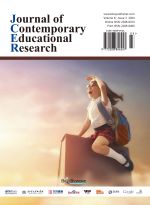The Influence of Swimming Athletes’ Burnout on Their Sports Participation Motivation in Hunan, China
Abstract
Objective: This study aims to explore the effect of swimming athletes’ burnout on their sports motivation in Hunan University, China. It seeks to understand how burnout influences various motivational factors, providing insights for optimizing swimming sports courses and enhancing student participation. Method: Employing random sampling, the study surveyed 260 swimming athletes from Hunan University. The research utilized a questionnaire divided into three parts: demographic information, the Athlete Burnout Questionnaire (ABQ), and the Intrinsic Motivation Inventory (IMI). Pearson’s r correlation analysis was conducted using SPSS to examine the relationships between burnout dimensions and motivational factors. Results: The study found significant correlations between a reduced sense of accomplishment and various motivational dimensions, including “interest/enjoyment,” “perceived competence,” “perceived choice,” and particularly “perceived tension.” Physical exhaustion showed a significant correlation only with “perceived tension,” indicating a strong link between psychological stress and physical fatigue. Sports devaluation was significantly correlated with “perceived tension,” suggesting that psychological stress impacts athletes’ valuation of their sport. Conclusion: The findings highlight the complex interplay between burnout and motivation in swimming athletes. Psychological stress, as indicated by “perceived tension,” emerges as a key factor influencing both the physical and emotional aspects of burnout. The study underscores the need for holistic training approaches that balance physical training with psychological well-being, personalized coaching, and supportive environments to enhance intrinsic motivation and manage stress effectively.
References
Deci EL, Ryan RM, 2000, The “What” and “Why” of Goal Pursuits: Human Needs and the Self-Determination of Behavior. Psychological Inquiry, 4(07): 234–236.
Zhou M, Li W, 2016, Intrinsic Motivation and Well-Being in Chinese Athletes: The Mediating Role of Personal and Social Expectations. Journal of Sport and Health Science, 2016(08): 123–125.
Bandura A, 1997, Self-Efficacy: The Exercise of Control, W.H. Freeman, New York.
Liu H, Chen A, 2017, Cultural Influences on Self-Perceptions of Competence and Achievement in Chinese Athletes. International Journal of Sports Psychology, 2017(09): 178–180.
Wang X, Zheng Y, 2016, Autonomy and Psychological Well-Being in Chinese Athletes: The Mediating Role of Need Satisfaction. Journal of Sport and Exercise Psychology, 2016(02): 35–37.
Li M, Wang D, Pyun DY, 2017, Psychological Stress in High-Level Athletes: A Comparison of Competitive Pressures in China and the United States. International Journal of Sports Science & Coaching, 2017(10): 345–347.
Raedeke TD, Smith AL, 2001, Development and Preliminary Validation of an Athlete Burnout Measure. Journal of Sport & Exercise Psychology, 2001(08): 256–258.
Vallerand RJ, Rousseau FL, 2001, Intrinsic and Extrinsic Motivation in Sport and Exercise: A Review Using the Hierarchical Model of Intrinsic and Extrinsic Motivation, Roberts GC, (ed), Advances in Motivation in Sport and Exercise. Human Kinetics, 2001(07): 312–314.
Lemyre PN, Treasure DC, Roberts GC, 2006, Influence of Variability in Motivation and Affect on Elite Athlete Burnout Susceptibility. Journal of Sport & Exercise Psychology, 2006(04): 145–147.
Gustafsson H, Kenttä G, Hassmén P, 2011, Athlete Burnout: An Integrated Model and Future Research Directions. International Review of Sport and Exercise Psychology, 2011(08): 344–246.

